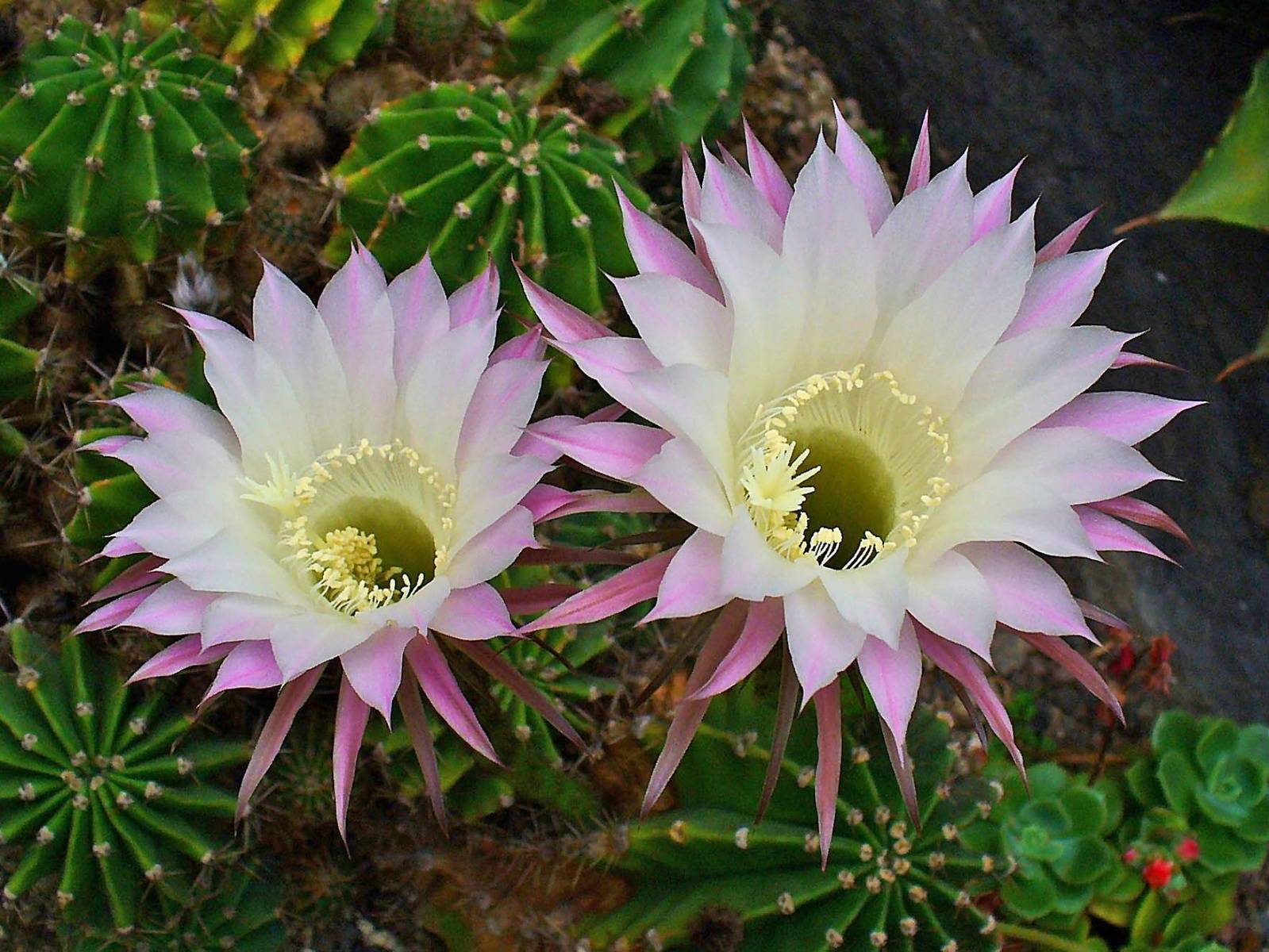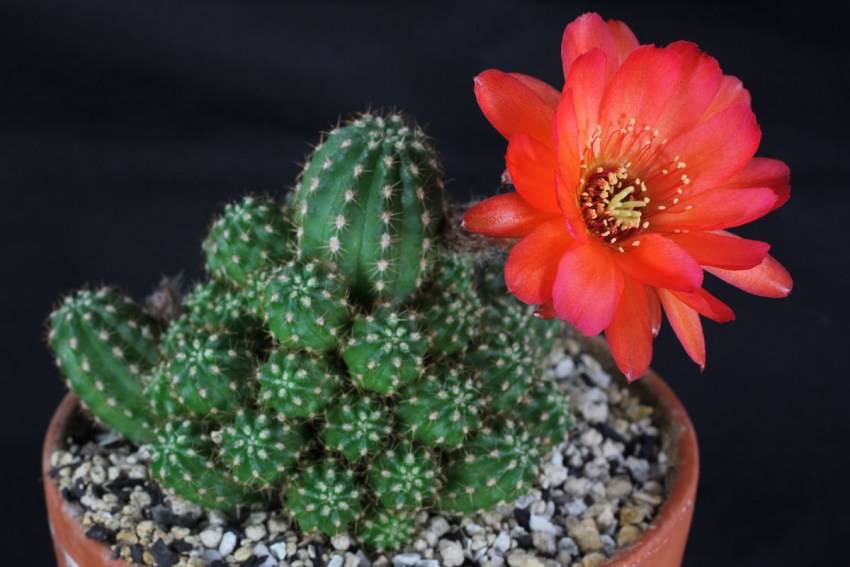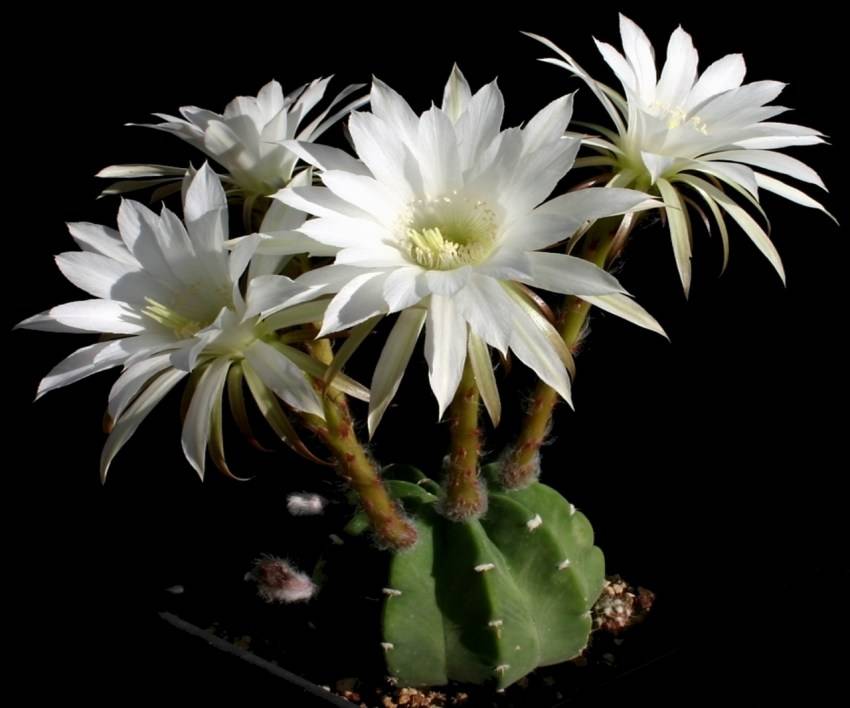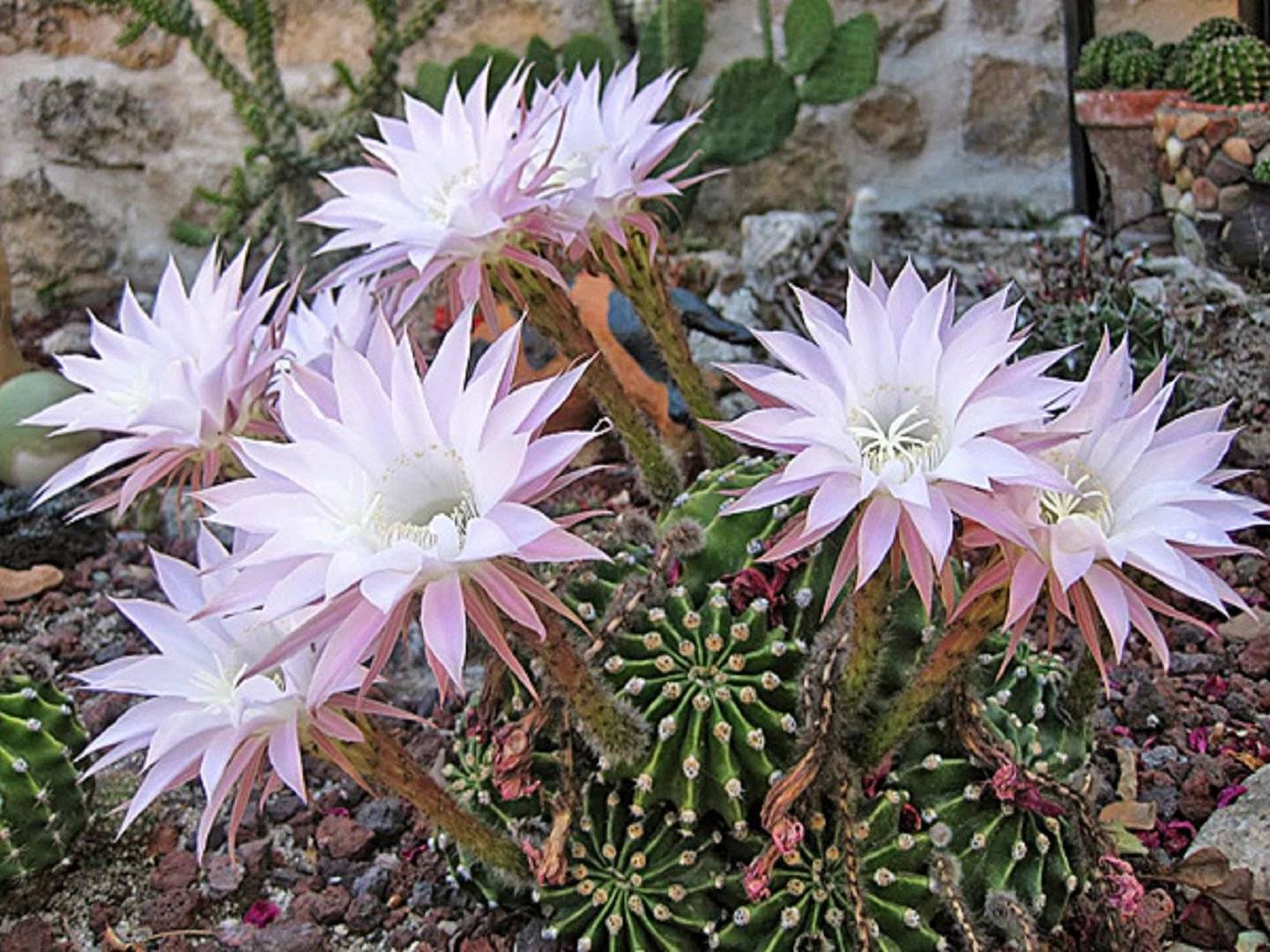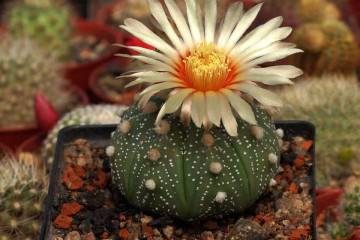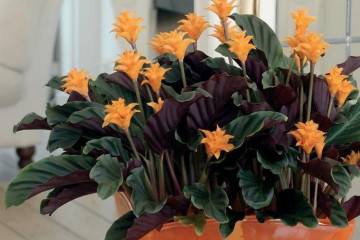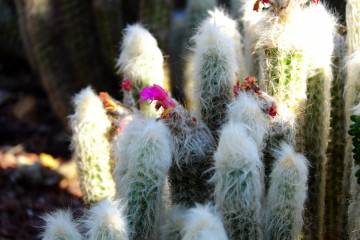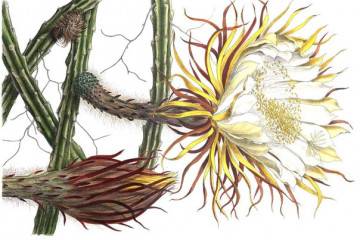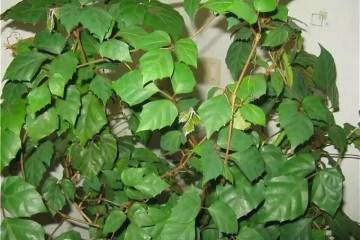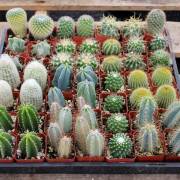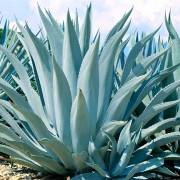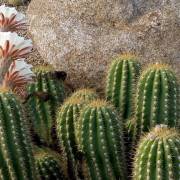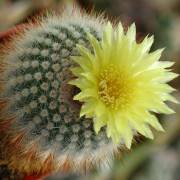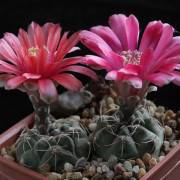Echinopsis cactus - home care
Content:
There are many different types of cacti. They differ in their appearance, growth and care conditions. Echinopsis cactus is the most famous and popular plant of this family. It is believed that this is a flower for beginners, because it does not require complex and long-term care.
What does the echinopsis cactus look like?
The name of the cactus echinopsis translates as "like a hedgehog." Indeed, a young plant is a spiny ball, reminiscent of a hedgehog coiled into a ball. As it grows, the cactus gradually gets longer. Certain types of echinopsis can reach up to 2 m. The homeland of the flower is South America.
Many types of flower are known, however, all are characterized by common features by which they are distinguished:
- young plants are ball-shaped, adults are more elongated;
- the presence of clear ribs is noticeable on the flower, up to 12 pcs., with areoles on which needles grow;
- up to 3 needles grow from one point;
- flowering is more often observed in spring, rather than summer;
- flowers grow directly on areoles with spines, mainly in the upper part;
- flowering duration is short, no more than 3 days;
- the color of the petals varies depending on the variety of cactus.
Echinopsis: species for home cultivation
There are many varieties of Echinopsis, but several of the most popular are distinguished:
- sharp-edged (Echinopsis Oxigona). A cactus with a wide stem, reaching a diameter of 20 cm. The number of ribs of Echinopsis ostrogranny varies from 13 to 15, the needles have a yellow tint. With age, they become darker, closer to black. The flower petals of Echinopsis Oksigon have a pink-white hue, up to 10 cm in diameter;
- Eyries (Echinopsis Eyriesii). The number of ribs in a cactus reaches 18. The species is distinguished by a special "fertility". The spines of Echinopsis Airies are small in size, the areoles are distinguished by a noticeable appearance. The plant blooms with beautiful pink flowers;
- Subdenudata (Echinopsis Subdenudata cv. Fuzzy Navel). The cactus is small in size, with slightly flattened stems. The ribs are quite noticeable, the spines are small and sharp. The flowers are often white, rarely pink. There may be several peduncles. Flowers open at night and smell very strong;
- Erie. A cactus resembles a ball or a club, it can reach a size of 30 cm. In an adult state, the diameter of the stem reaches 15 cm. The ribs are deep, the spines are short and straight. The flowers of Echinopsis Erye, up to 10 cm in diameter, bloom at night, the petals are white or lilac;
- golden (Echinopsis Aurea). A variety of cactus with a barrel or a barrel. The flower grows up to 10 cm. The spines are long and sharp, the ribs are pronounced. The flowers are yellow, their size reaches 5 cm. In rare cases, golden echinopsis can have a white or red shade of petals;
- Mamylose (Echinopsis Mamillosa). The cactus remains in the form of a ball even in adult form. The spines reach a length of 1 cm. The petals of Mamilosa are wide, bright pink;
- hook-nosed (Echinopsis Ancistrophora). The plant has the shape of a ball, the size is small, up to 10 cm. The crown is flat, the number of ribs can reach 20. Flowers are quite large, in diameter they can reach 10 cm;
- Chamecereus (Echinopsis Chamaecereus). Differs in appearance - shoots are long, like fingers. Small spines and areoles.The petals are bright red, their diameter is up to 2.5 cm.
There are also hybrid varieties that are bred by breeders.
By the way, it should not be confused with the Echinopsis Fantasy cactus. It is a garden plant that looks completely different.
Features of home care
When choosing an echinopsis flower, home care does not require much effort. However, some rules still need to be adhered to.
Temperature
In the spring and summer seasons, the normal room temperature is suitable for the plant. In winter, it is recommended to lower it to 10 ° C, so that the flower can calmly gain strength during this time.
Lighting
The culture loves the bright light that it should provide in the morning and evening. In the daytime, from the bright sun, the plant is shaded to avoid burns. In autumn and winter, it is required to provide the maximum amount of light to the cactus.
Watering
The cactus is thoroughly watered during the growth period, the earthen lump must be completely saturated. However, the next irrigation is carried out after the top layer has dried by 2-3 cm. In cold weather, the amount of irrigation is reduced, and in winter, you can simply slightly moisten the soil so that it does not dry out completely.
Spraying
Spraying is not required for cactus. You can occasionally wipe the shoots with a clean cloth to remove excess dust.
Humidity
The plant does not need high humidity in the room. In winter, you need to provide the plant with dry air and well ventilate the room.
Priming
For culture, a special soil for succulents, which is slightly acidified, is perfect.
Top dressing
Fertilizing the echinopsis flower is required in the spring and summer with special means for cacti. Top dressing is stopped in the fall; in winter, fertilizers are also not needed.
Features of winter care during the rest period
The dormant period for cacti begins in the fall. Until spring, the culture is gaining strength, and with the onset of warmth, it begins to actively grow and prepare for the appearance of flower buds.
In autumn and winter, watering is reduced, and the plant is moved to a cooler place. It is not recommended to put the pot in a dark place, the culture will simply stretch out and lose its normal shape.
How echinopsis cactus reproduces
Echinopsis Subdenudata and others can be easily propagated by cuttings and seeds. Each method has its own characteristics.
Germinating seeds
It is possible to grow a succulent from seeds, the process takes a long time, but it allows you to get a rather rare plant. Procedure step by step:
- The container is filled with suitable earth.
- Seeds are sown in it; you do not need to fill them on top.
- Spray lightly from a spray bottle.
- Cover the container with film or glass and put it in a warm place.
- Periodically, the pot should be ventilated, if necessary, moisten the soil.
- After a couple of weeks, the first shoots will appear.
Rooting babies
Cacti often produce babies that are easy to propagate. The method is much simpler and faster. The baby is carefully separated from the main plant, dried a little. Then you can simply plant it in a container with prepared soil.
As a rule, the shoots take root quickly. However, they often lose the properties of the mother flower and rarely bloom.
Transfer
A cactus is transplanted, provided that the pot has become small for it.In the spring, it is allowed to carry out the transshipment of the plant into the renewed soil. The transplant is carried out every 2-3 years. During the procedure, try not to damage the roots.
Diseases and pests
With excessive watering during the dormant period, the occurrence of various types of rot is not excluded. It is quite difficult to cope with such a disease, but you can save a cactus if you try hard.
The danger to the cactus is also posed by harmful insects:
- mealybug;
- spider mite;
- shield.
They get rid of them with the help of special tools that can be easily bought in the store.
Succulent care is easy. The plant is difficult to ruin, and with proper care for the Echinopsis cactus at home, it will delight not only with a healthy appearance, but also with excellent flowering.
